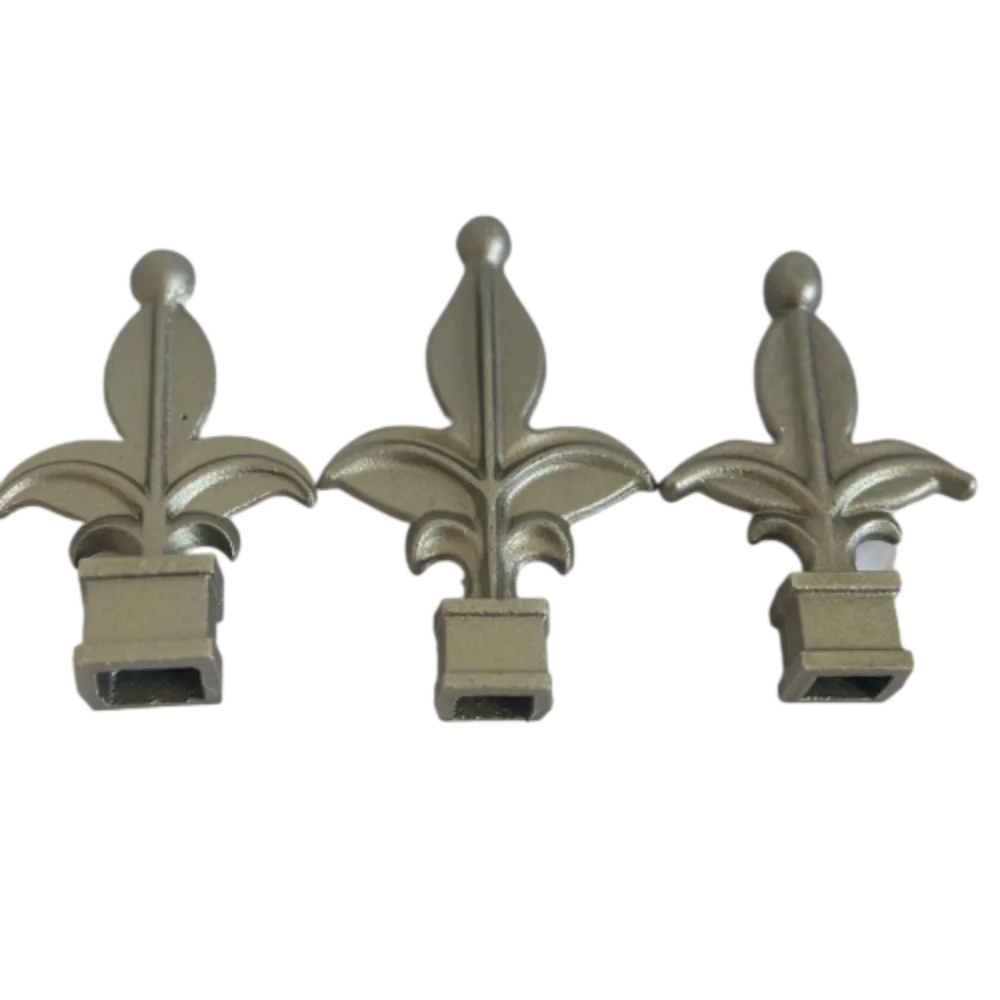Decorative Cast Iron Finial for Enhancing Architectural Elements and Garden Features
The Timeless Charm of Cast Iron Finials
Cast iron finials are an often-overlooked architectural detail that adds a unique touch to various structures, from fences and railings to roofs and gateposts. These ornamental enhancements are not only aesthetically pleasing, but they also carry a rich history and demonstrate the craftsmanship of a bygone era. In this article, we will explore the allure of cast iron finials, their historical significance, and how they can enhance modern designs.
A Glimpse into History
Cast iron originated in ancient China, but its use in Western architecture flourished during the Industrial Revolution in the 18th and 19th centuries. The ability to mass-produce cast iron allowed for intricate designs that were both affordable and durable. Finials emerged as a popular decorative element, used primarily to top off various structures, symbolizing completion and elegance.
These decorative pieces often feature a variety of motifs, including florals, animals, and geometric shapes. Their designs can be simple, evoking a minimalist aesthetic, or ornate, showcasing the detailed workmanship of the foundry artisans who crafted them. Cast iron finials were commonly used in Victorian architecture, where they added sophistication to homes, public buildings, and industrial structures alike.
The Aesthetic Appeal
One of the primary draws of cast iron finials is their aesthetic versatility. Depending on the design, a finial can convey a sense of elegance, whimsy, or tradition. For instance, a spiraled finial with floral patterns can enhance the charm of a wrought iron fence, offering a delicate touch to an otherwise straightforward structure. On the other hand, a bold, geometric finial can provide a modern twist to contemporary architecture or landscaping.
Moreover, their dark, metallic finish contrasts beautifully with various materials, such as wood, brick, and stone. This interplay of textures and colors contributes to the overall visual interest of a design. The patina that develops over time can also add character, creating a rich narrative that shows the passage of time and the beauty of aging materials.
cast iron finial

Practical Benefits
Beyond their beautiful appearance, cast iron finials serve several practical purposes
. Traditionally, they acted as protective elements, preventing water from pooling at the tops of structures, such as roofs or fence posts. In modern applications, while they still contribute to the protection of the structures they adorn, their primary function is often ornamental.Finials can also add height and dimension to a structure, making it appear more grand and inviting. In gardens and outdoor settings, they can serve as focal points, guiding the eye and drawing attention to specific areas. Whether used on a gate, atop a fence, or as part of a sculpture in a garden, cast iron finials can transform spaces from ordinary to extraordinary.
Modern Applications
While cast iron finials are often associated with historical architecture, they continue to find relevance in modern design. Architects and interior designers are increasingly incorporating these pieces into contemporary projects, recognizing their potential to blend tradition with modern aesthetics.
In restoration projects, cast iron finials can be crucial for preserving the historical integrity of a building. Replacing a damaged finial with a replica not only maintains the building's character but also honors its heritage. Additionally, many designers are using cast iron finials in innovative ways, repurposing them as unique home decor items, garden features, or even furniture accents.
Conclusion
Cast iron finials are more than just decorative elements; they embody a rich tapestry of history, craftsmanship, and artistic expression. Whether as part of a grand estate or a quaint garden gate, these pieces add a timeless charm that enhances the beauty of any structure. As we continue to appreciate the value of detailed artistry, cast iron finials remind us of the importance of merging tradition with modern design—creating spaces that are not only functional but profoundly beautiful. In a world that often favors the minimalistic, these ornamental details beckon us to celebrate the intricacies of design that have stood the test of time.
-
Wrought Iron Components: Timeless Elegance and Structural StrengthNewsJul.28,2025
-
Window Hardware Essentials: Rollers, Handles, and Locking SolutionsNewsJul.28,2025
-
Small Agricultural Processing Machines: Corn Threshers, Cassava Chippers, Grain Peelers & Chaff CuttersNewsJul.28,2025
-
Sliding Rollers: Smooth, Silent, and Built to LastNewsJul.28,2025
-
Cast Iron Stoves: Timeless Heating with Modern EfficiencyNewsJul.28,2025
-
Cast Iron Pipe and Fitting: Durable, Fire-Resistant Solutions for Plumbing and DrainageNewsJul.28,2025
-
 Wrought Iron Components: Timeless Elegance and Structural StrengthJul-28-2025Wrought Iron Components: Timeless Elegance and Structural Strength
Wrought Iron Components: Timeless Elegance and Structural StrengthJul-28-2025Wrought Iron Components: Timeless Elegance and Structural Strength -
 Window Hardware Essentials: Rollers, Handles, and Locking SolutionsJul-28-2025Window Hardware Essentials: Rollers, Handles, and Locking Solutions
Window Hardware Essentials: Rollers, Handles, and Locking SolutionsJul-28-2025Window Hardware Essentials: Rollers, Handles, and Locking Solutions -
 Small Agricultural Processing Machines: Corn Threshers, Cassava Chippers, Grain Peelers & Chaff CuttersJul-28-2025Small Agricultural Processing Machines: Corn Threshers, Cassava Chippers, Grain Peelers & Chaff Cutters
Small Agricultural Processing Machines: Corn Threshers, Cassava Chippers, Grain Peelers & Chaff CuttersJul-28-2025Small Agricultural Processing Machines: Corn Threshers, Cassava Chippers, Grain Peelers & Chaff Cutters












